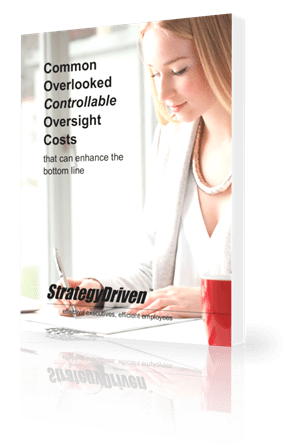7 Ways to Keep Your Project Budget on Track and Profitable
1. Develop a Detailed and Realistic Budget
In order to effectively budget, you must understand the full scope of the project, including an estimated breakdown of travel costs, equipment, software, payroll, etc.
List everything. Don’t forget to include a healthy projection of worst-case scenarios and budget for those as well.
Make sure the budget is reviewed by each department involved to ensure accuracy.
2. Forecast Where the Budget Should Be During Various Junctures of the Project
Break down the project into chunks, and factor in where the project should be at each point.
If you’re over budget, why? Is there anything you can do to get back on track?
By keeping a pulse on the budget along with other aspects of the project, it’s much easier to spot problems when they initially arise and adjust accordingly.
3. Ensure the Team Is Aware of the Budget
It’s important the team is aware of the budget, and is able to communicate if it’s realistic as far as their role goes.
If it isn’t, ask for feedback.
Be open to ideas of potentially cutting costs that don’t undermine the integrity of the endeavor, based on your team’s various experiences in the position.
Above all, encourage everyone involved to be as budget conscious as possible.
4. Maximize Your Resources
Do this through creating and cultivating relationships with vendors or other businesses that complement yours. Collaborate or trade services, if applicable.
Encourage budget-related communication within your team as well. If at any point they realize a task may take longer, or another purchase needs to be made, it’s important that they bring the issue to light as early as possible—including any alternative solutions.
5. Don’t Lose Out on Efficiency
There are a ton of incredibly powerful all-encompassing project and contract management software tools that streamline a lot of the grunt work, and let you keep track of all the different elements associated with the project.
Look for something that’s simple and intuitive, yet also customizable. Ultimately, you want the software you use to work for you, and not the other way around.
Many systems allow you to track your budget, providing real-time insight into the financial state of the project at any given moment, as well as projected project profitability.
6. Explore Alternate Financing Options
Part of your contingency plan should involve sussing out alternate financing options, if needed. In addition, having a budget change option as part of the plan is helpful.
While it’s critical to plan and be as accurate as you can throughout that process, it’s unlikely your projections will be 100% accurate.
Most people underestimate how much something is likely to cost. Typically, the smaller less obvious aspects are routinely forgotten, yet the cost of these ancillary activities adds up, fast.
Nobody wants to abandon a project because the funding runs out. Have some alternate financing options in place, just in case.
7. Be Quick to Pivot and Adjust
The faster you are to realize something isn’t working and adjust, the more money you’ll save.
Again, it’s impossible to plot something out and stick to the plan 100%. By spotting issues early on and adjusting as necessary, it’s much easier to keep both the project and budget on track.
Don’t lose sight of the project goals.
Another important aspect is knowing when to let go. If something isn’t working—if the project keeps getting hit with cost after cost and you’re literally just sinking more and more into it—that can make it hard to let go. After all, you’ve invested so much already. Stopping seems foolish, counter intuitive even.
But so is losing money.
Have a budget maximum, a point that if you hit somewhere before completion, you take a long hard look at whether or not it’s worth it to keep going, and know when to let go, or get back to the drawing board.
Conclusion
Embarking on a project with a clear, realistic, well planned budget that you monitor regularly will save both time and money. The two most valuable resources we have.














Leave a Reply
Want to join the discussion?Feel free to contribute!